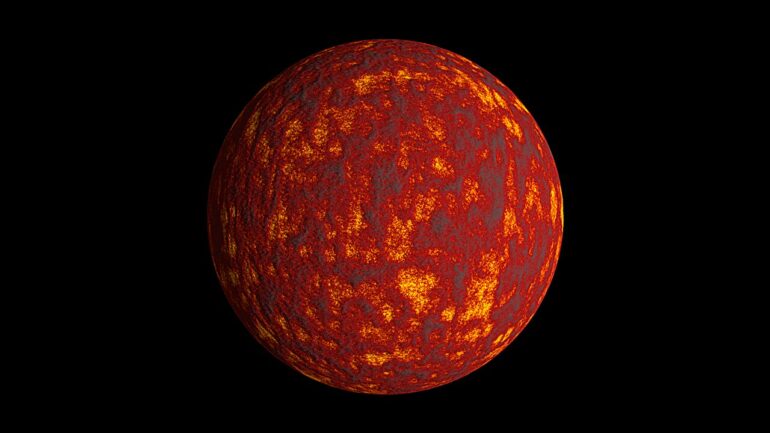Before Earth became the blue planet, it was engulfed by a very different kind of ocean: a vast, deep magma ocean reaching down hundreds or perhaps even thousands of kilometers.
As early Earth’s magma ocean cooled and solidified, different types of minerals crystallized at different rates, so the chemical makeup of the molten rock changed over time. And as the magma released gases into early Earth’s atmosphere, the chemical makeup of the atmosphere changed as well.
During their formation, Mars and many other rocky planets went through similar magma ocean stages. However, because this all occurred in the distant past for Earth and Mars—and in distant space for younger rocky planets—it is very difficult to know exactly how it all happened. However, information about the chemical makeup of rocky planets’ early atmospheres is preserved in unreactive noble gases.
Now, Schaefer and team present novel models simulating how Earth’s and Mars’s magma oceans might have changed over time as they crystallized, using these atmospheric clues and information about iron chemistry. The research is published in the Journal of Geophysical Research: Planets.
The models incorporate new calculations that capture how ferrous (reduced) and ferric (oxidized) iron behave as magma crystallizes in the mantle. The research team tested the model with different initial magma ocean depths and chemical makeups to see which combination would create the atmospheres they know existed around early Earth and Mars.
The researchers found that for Earth, models that start with a shallow magma ocean outperform models that start with a fully molten mantle. A shallow magma ocean could indicate either a mantle that was only partially melted or a fully melted mantle that began solidifying from its middle, with the innermost and outermost layers remaining molten for some time.
For Mars, none of the models successfully aligned with prior research findings about the red planet’s early atmosphere, unless the initial magma composition had lower levels of ferric iron than it is thought to have contained.
These findings lead toward a deeper understanding of how rocky planets such as Earth and Mars form while also highlighting the need for more experimental research on the behavior of iron in molten rock.
More information:
Laura Schaefer et al, Ferric Iron Evolution During Crystallization of the Earth and Mars, Journal of Geophysical Research: Planets (2024). DOI: 10.1029/2023JE008262
Provided by
American Geophysical Union
This story is republished courtesy of Eos, hosted by the American Geophysical Union. Read the original story here.
Citation:
How did magma oceans evolve on early Earth and Mars? Iron chemistry and primordial atmospheres offer clues (2024, October 10)



